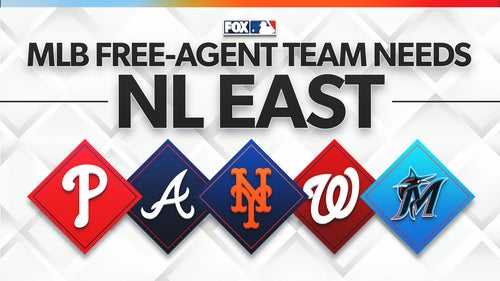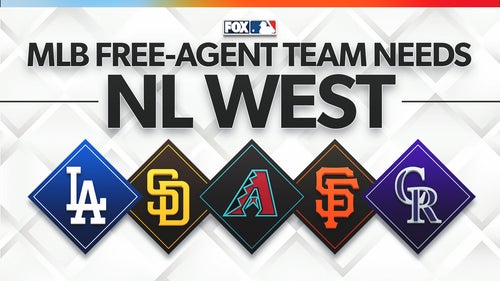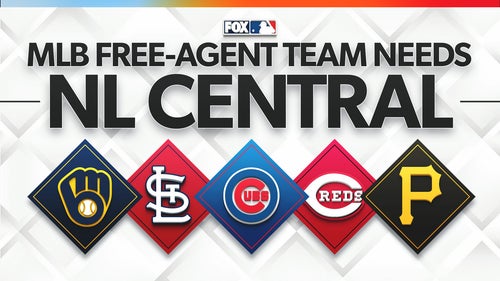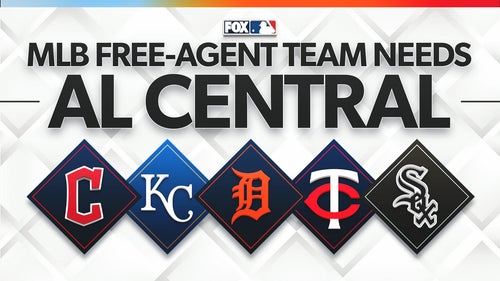Derby's quick pace makes it a challenge for ESPN to produce
LOS ANGELES (AP) — When Pete Alonso or Ronald Acuña Jr. send balls out of the ballpark, they get to the seats in a hurry.
No problem for production crews during regular season games. But when it comes to broadcasting the rapid-fire All-Star Home Run Derby, it’s a unique test for ESPN.
A time-based format was introduced in 2015, and hitters now have 3 minutes to launch as many big flies as possible, meaning there are often two balls in the air simultaneously. With how quickly stars like Alonso — the two-time reigning champ — can crank out 400-plus foot drives, there isn’t time for replays of even the most majestic home runs.
ESPN is embracing the challenge going into Monday night's Derby at Dodger Stadium. Last year’s event averaged 7.13 million viewers on ESPN and ESPN2, making the most-watched Derby since 2017. By comparison, this season’s “Sunday Night Baseball” broadcasts are averaging 1.56 million, on pace with last season.
The switch from each player having 10 outs to a timer has had its desired effect, with balls leaving the yard at a prodigious rate. It has also kept ESPN's production truck on its toes.
“I would say the real exercise, limitation with Home Run Derby, is the battle or challenge of managing an electric pace to it, at the same time that we’re trying to do new and innovative things,” said ESPN vice president of production Phil Orlins. “I don’t feel limited in terms of what we can do from an MLB standpoint. What’s challenging is that the event moves — and by design.”
The final year of the 10-out format over four rounds in 2014 saw a combined 78 home runs among 10 players. When MLB went to an eight-player bracket and timed format the following year, the total nearly doubled to 159.
Last year at Denver’s Coors Field saw 309 homers, including 208 in the first round. The high-water mark is 311 from 2019 in Cleveland.
The timing of the rounds has evolved over the last seven years. It began with 5-minute rounds in 2014 before dropping to 4 minutes in 2016 and 3 minutes last year. Players can earn bonus time if homers equal or exceed 440 feet in regulation time.
With balls hit every 4 or 5 seconds, there isn’t enough time to be all that creative when showing live action from different angles.
“What’s challenging about the event is that because multiple home runs are hit at the same time, it’s not the shots that are challenging; it’s the organizations of which ones are shooting which home runs that’s organizing,” Orlins said. “Because when Pete Alonso walks it off in the bonus round and hits six home runs in 24 seconds, it’s just trying to organize which camera goes with which home run and then finding them, is an incredibly challenging exercise.
“So when Shohei Ohtani hits a 520-foot home run like he did last year, it’s like, which of the cameras shot that, and which ones were resetting because he had just hit a home run 3 seconds earlier. That’s like a hefty organizational process that we’re still trying to master.”
Players will be mic’d up during the Derby, but there won’t be any cameras on their caps or on the catcher. There is also balancing how much data to give to the viewer while the event takes place. Orlins said if the screen wasn’t limited, there might be a way to bring everything getting.
“I think the thing that I would like to do, if the screen weren’t limited to a 16-by-9 space, with two things happening at once, I would like to be able to sort of have golf-like virtual 3D images of the home run like you see on the flank of a golf screen at the same time that you’re watching the pitches and swings on the other side,” Orlins said.
The closest when it comes to incorporating data, 3D tracking and showing the action might be the Statcast presentation on ESPN2. However, all three will not be shown at once.
When it comes to storylines, the biggest one is Alonso trying to become the first to win the Derby three consecutive times. Alonso homered three times during last month’s four-game series at Chavez Ravine and is the first player in the 60-year history of Dodger Stadium to go deep seven times in his first 11 games played here.
The sentimental favorite might be the Cardinals’ Albert Pujols, who briefly played for the Dodgers last season.
___
More AP MLB: https://apnews.com/hub/MLB and https://twitter.com/AP_Sports









